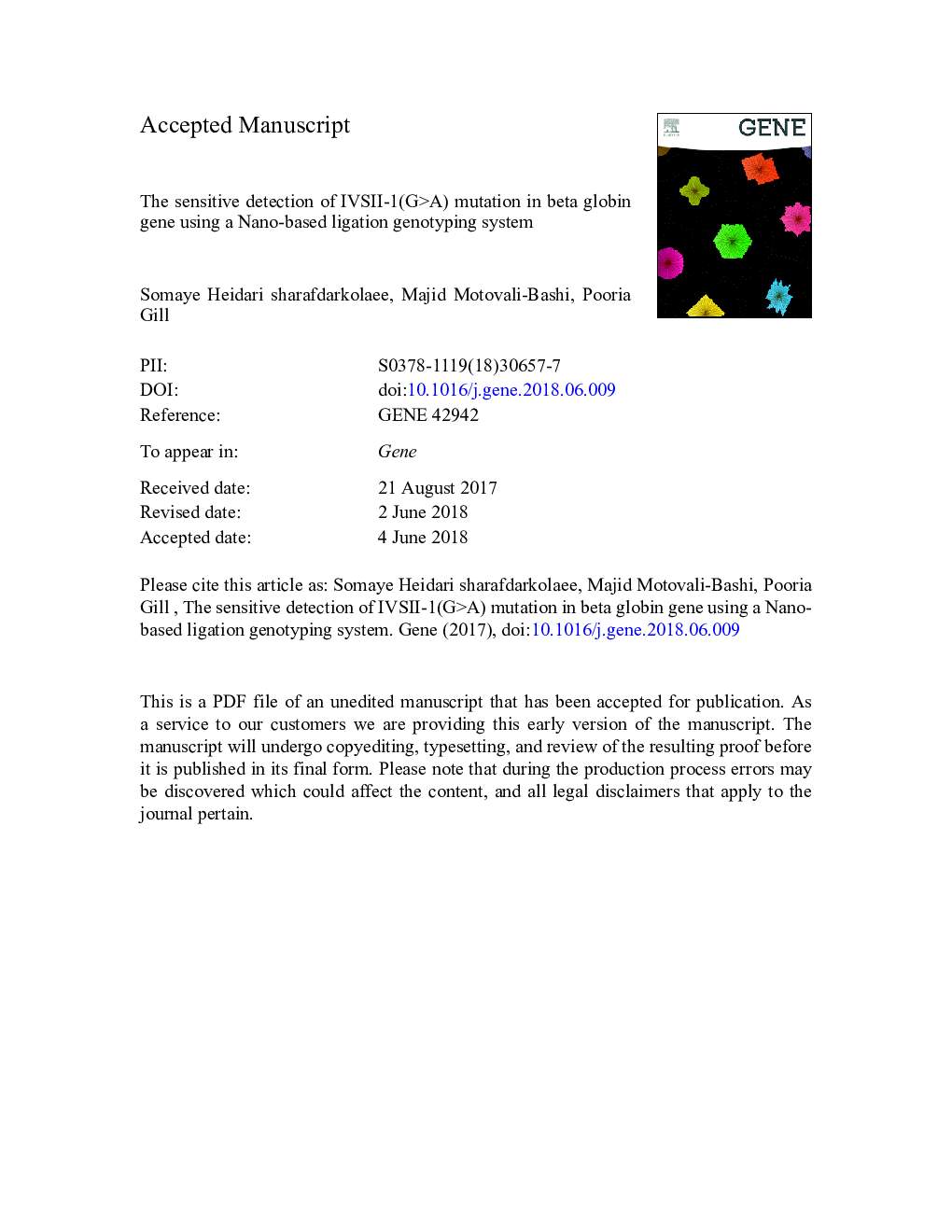| Article ID | Journal | Published Year | Pages | File Type |
|---|---|---|---|---|
| 8644547 | Gene | 2018 | 25 Pages |
Abstract
Beta-thalassemia (β-thalassemia) is a globally genetic diseases, and is most prevalent in the Middle East, particularly in Iran. Carrier detection and prenatal diagnosis are the best ways to managing it, and to prevent new community cases from emerging. We report on a simple method for rapid detection of the worst β-thalassemia point mutation in Iran (IVS-II-1 G>A), using a nano-based ligation assay, this was performed using probes with labeled magnetic nanoparticles and quantum dots. After optimizing the technique, 50 DNA samples were genotyped with this method. We found a frequency of 72% for IVSII-1 (GËA) mutation (42% heterozygote, and 30% mutant homozygote) with a highly sensitive nano-based ligation genotyping system, offering excellent sensitivity and specificity for point mutation detection; it has been demonstrated to be inaccurate, sensitive, cost-effective, and rapid technique for single nucleotide polymorphism (SNP) genotyping.
Keywords
HRMTemporal Temperature Gradient Gel ElectrophoresisBeta globinTGGEMNPHBBLDRARMSRFLPDGGEDenaturing gradient gel electrophoresisBeta-thalassemiaamplification refractory mutation systemHigh resolution meltingMagnetic nanoparticlequantum dotligase detection reactionrestriction fragment length polymorphisms
Related Topics
Life Sciences
Biochemistry, Genetics and Molecular Biology
Genetics
Authors
Somaye Heidari sharafdarkolaee, Majid Motovali-Bashi, Pooria Gill,
